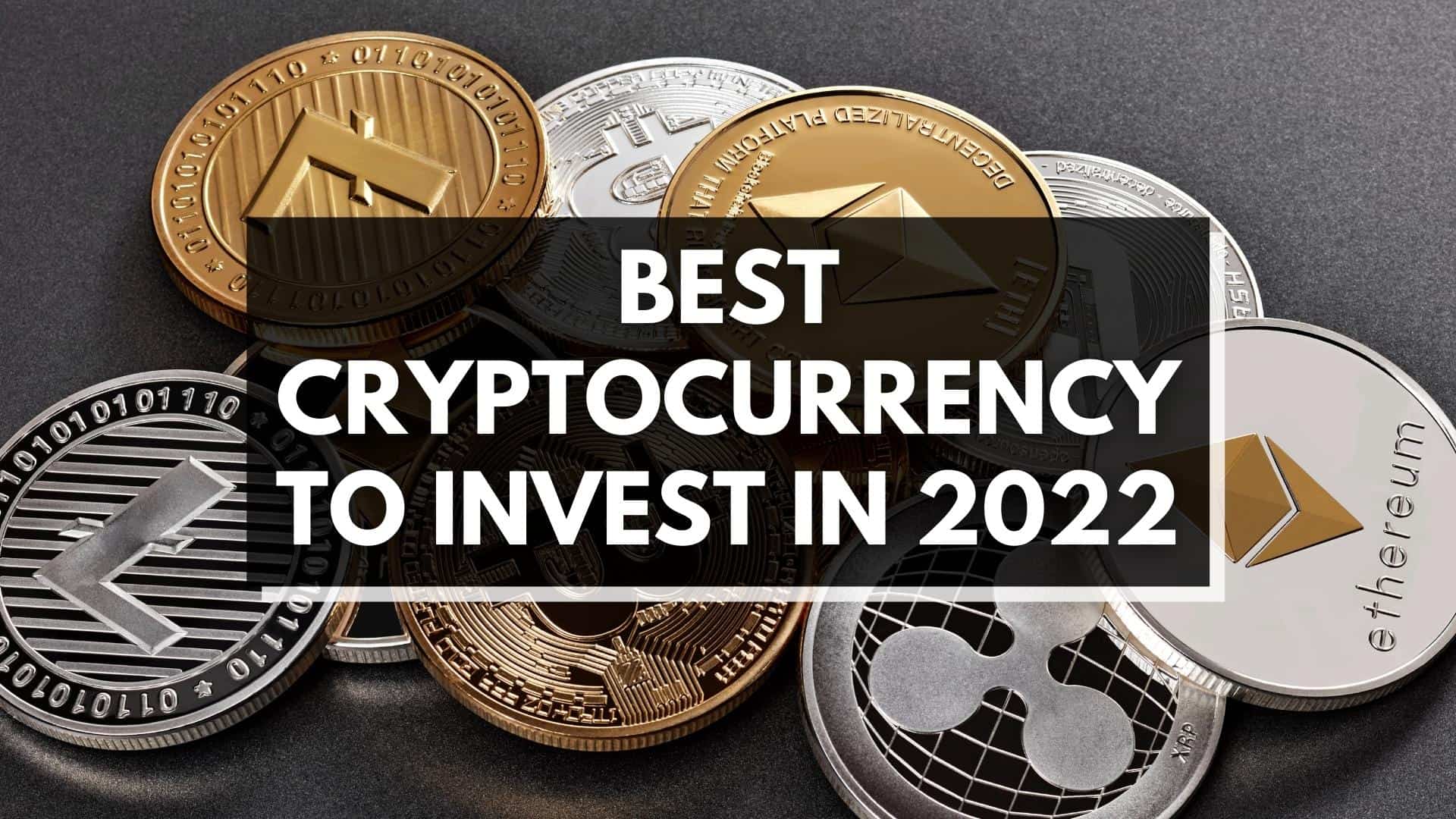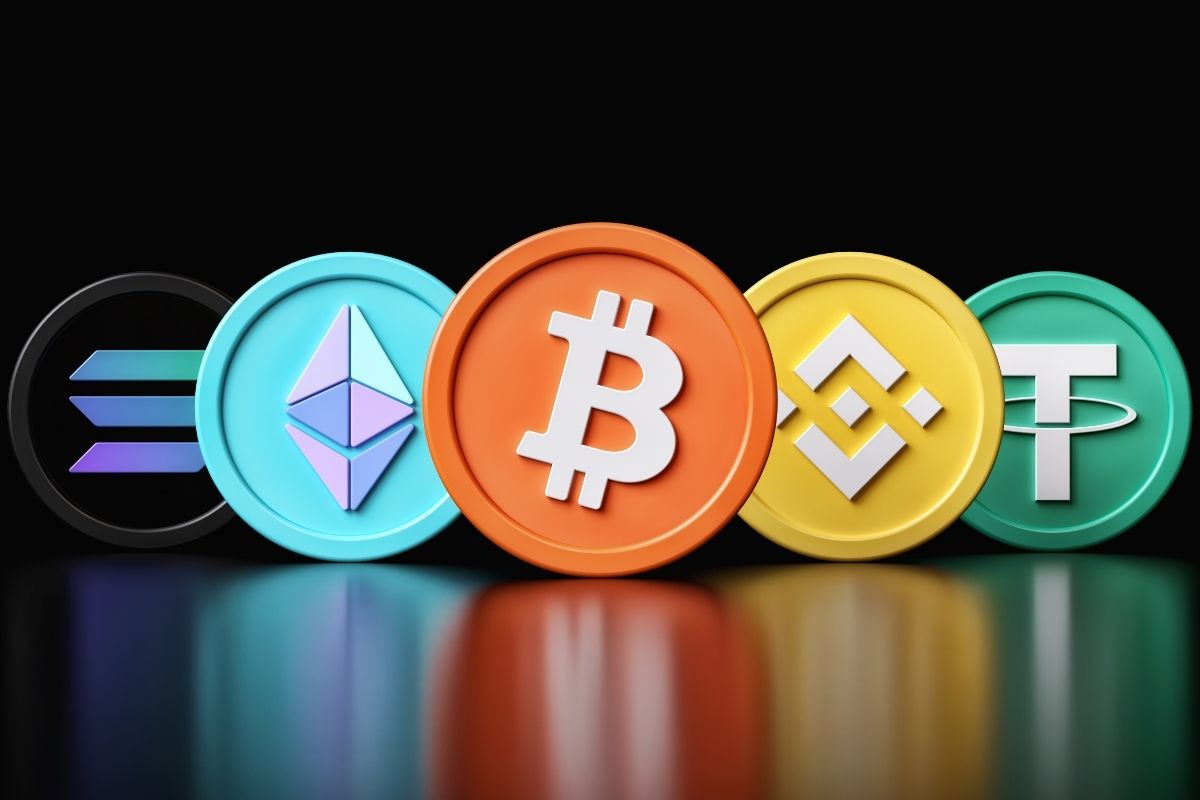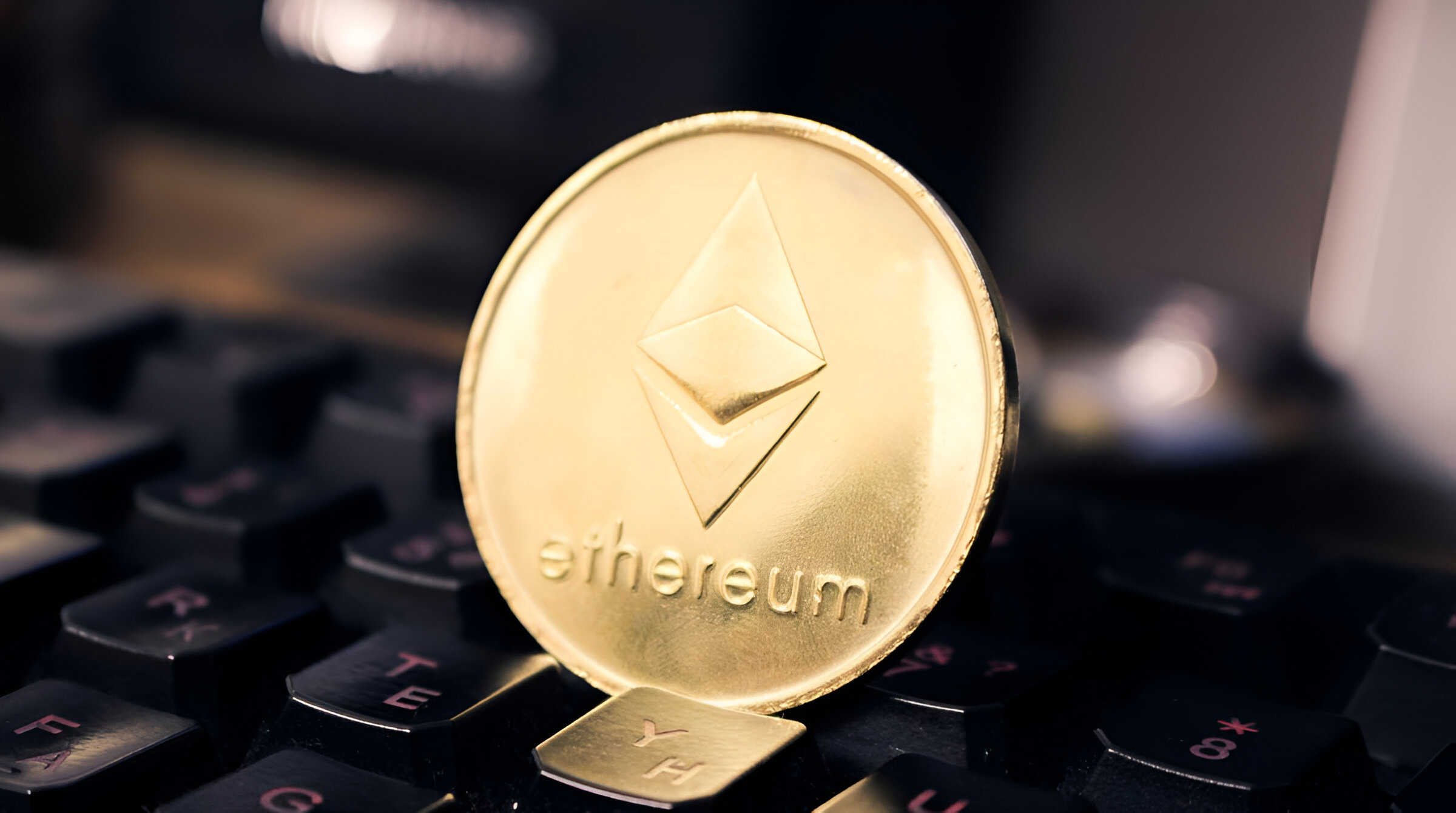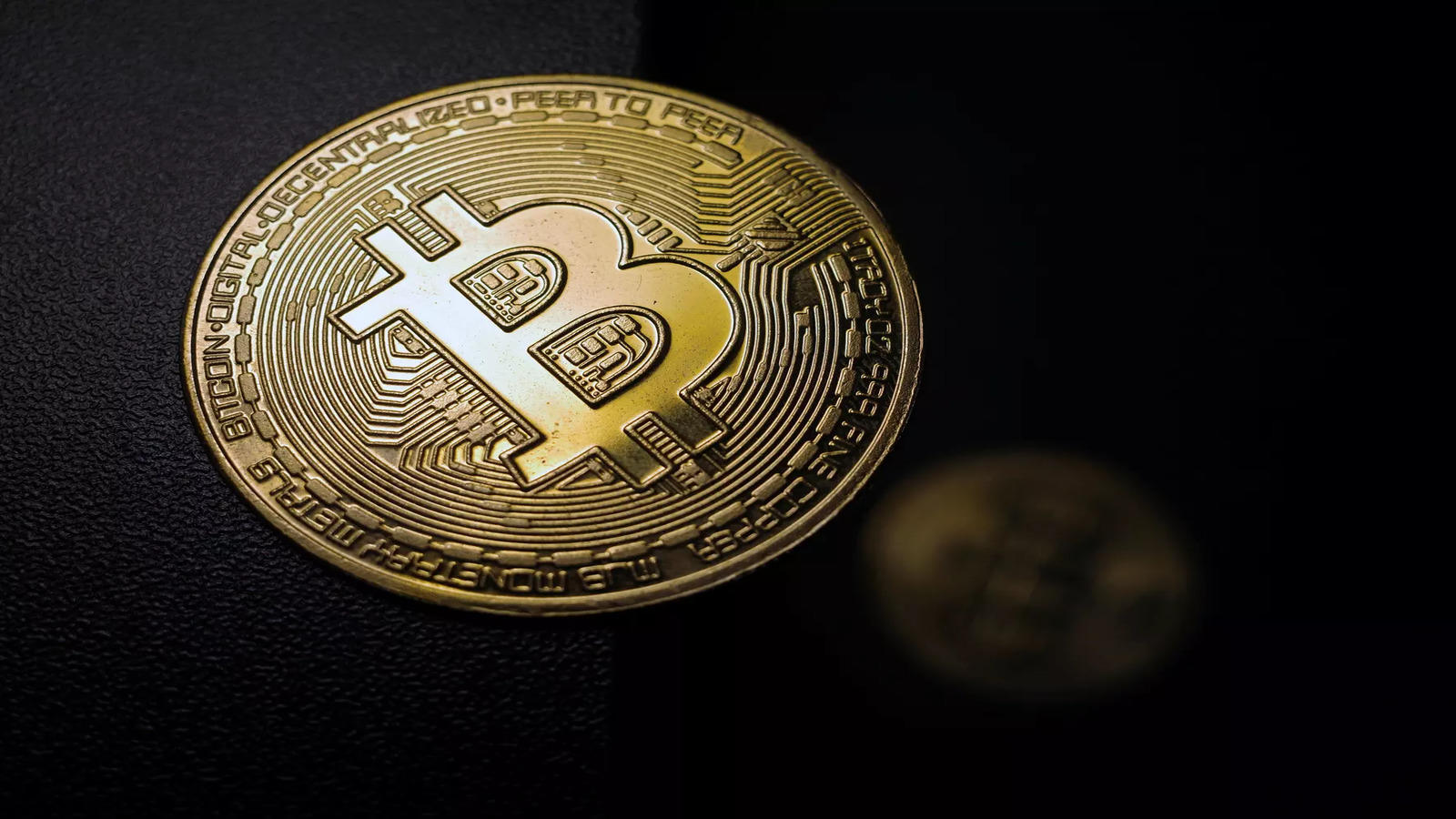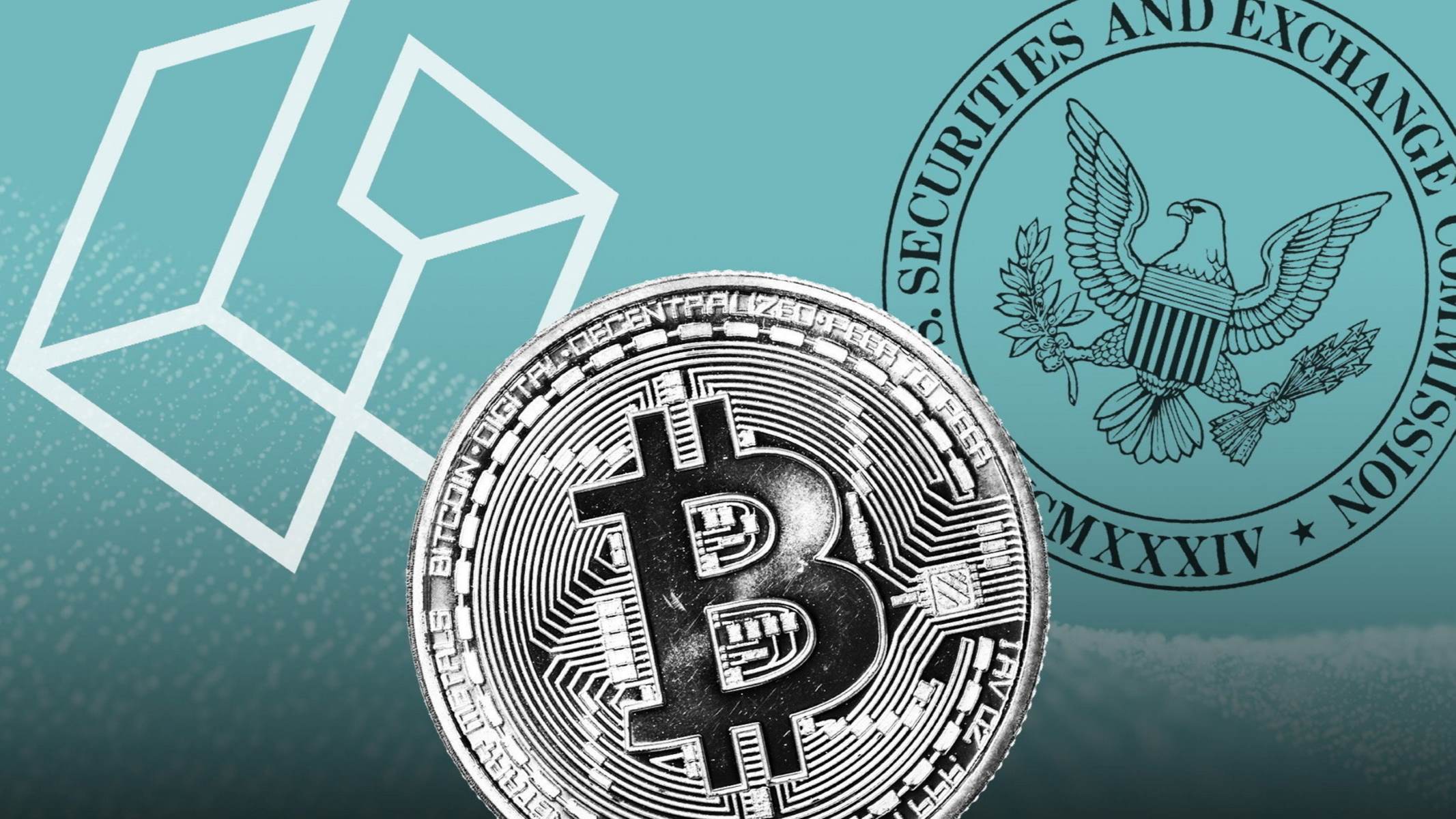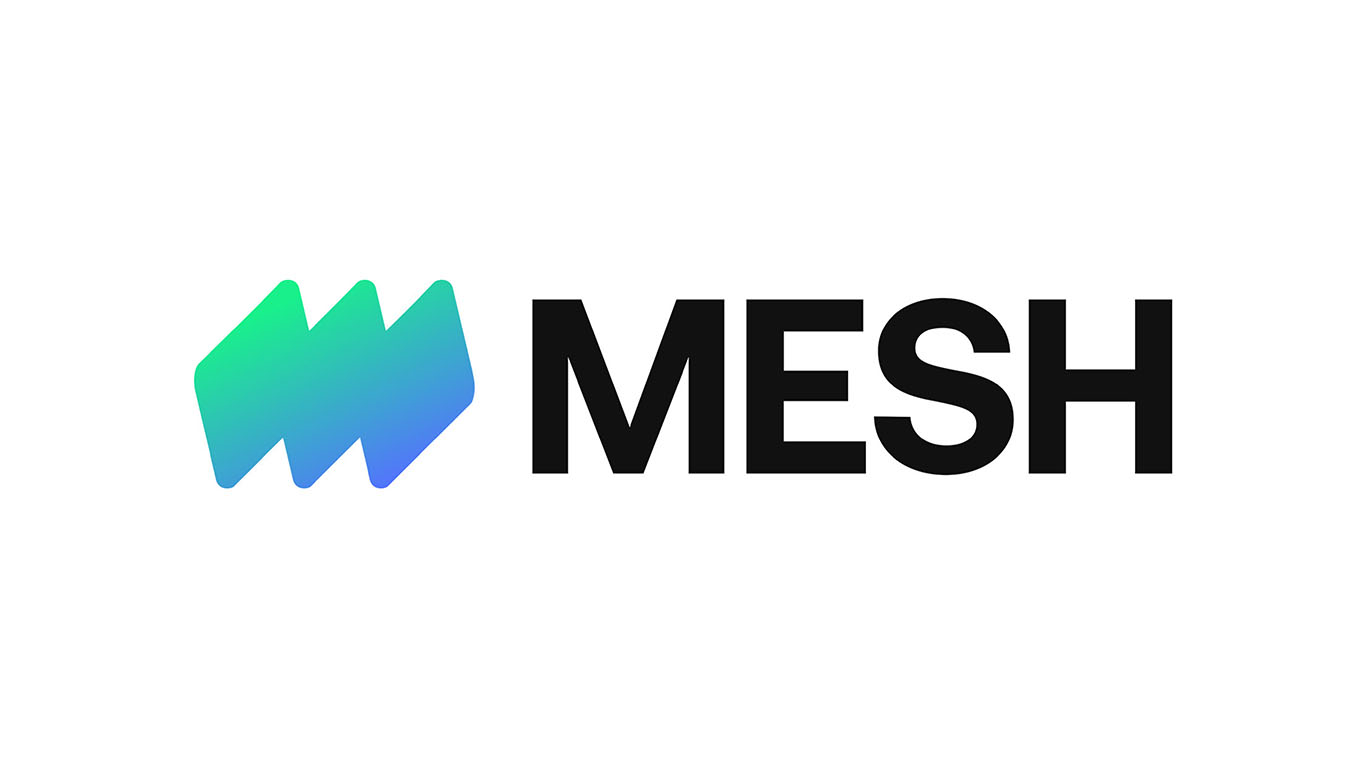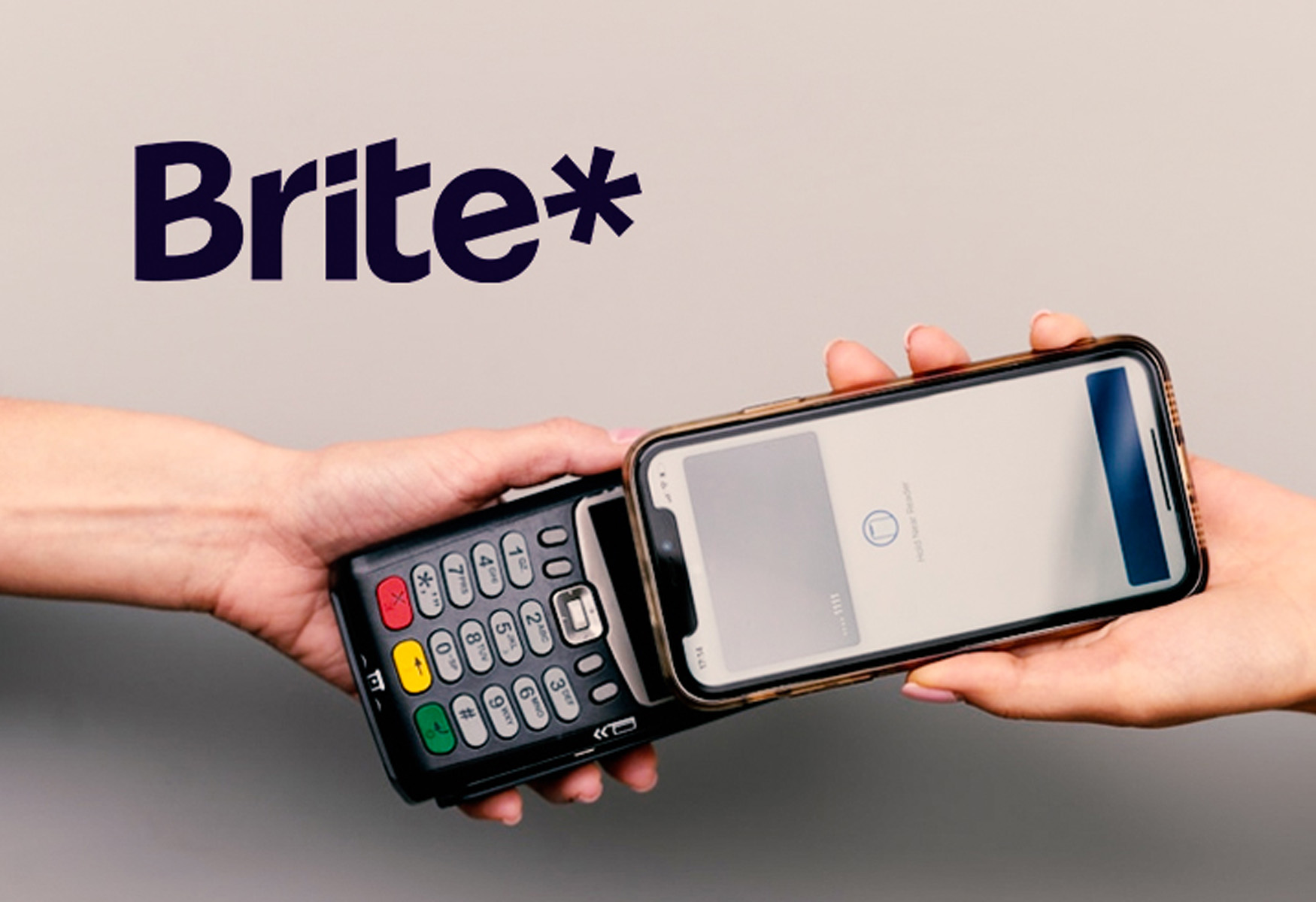Introduction
The world of cryptocurrency investing has gained significant attention in recent years. With the growing interest and acceptance of digital currencies, it is crucial to stay informed about the potential investment opportunities in the market.
In this article, we will explore some of the top cryptocurrencies to consider for investment in 2022. It’s important to note that investing in cryptocurrencies carries risks, and thorough research and analysis are key before making any investment decisions.
Cryptocurrencies function on the basis of blockchain technology, which provides a secure and decentralized way of conducting transactions. Each cryptocurrency has its unique features and potential for growth, making it essential to understand their fundamentals before investing.
The cryptocurrency market is highly volatile, and prices can fluctuate dramatically within a short period. Therefore, it’s important to consider the long-term potential and market trends before making any investment decisions.
Now, let’s explore some of the top cryptocurrencies that have gained significant attention and have the potential for growth in 2022.
Bitcoin (BTC)
Bitcoin (BTC) is the pioneer of the cryptocurrency world and remains the most widely recognized and valuable digital currency. Created in 2009 by an anonymous person or group of individuals known as Satoshi Nakamoto, Bitcoin operates on a decentralized network called blockchain.
Bitcoin’s popularity and widespread adoption have made it a store of value and a medium of exchange in various industries. Its limited supply, with a maximum cap of 21 million coins, has contributed to its scarcity and increased demand.
The price of Bitcoin experienced significant volatility over the years, with notable bull and bear cycles. However, it has consistently shown resilience and recovered from market downturns, which has increased investor confidence in its long-term value.
In recent years, Bitcoin has garnered attention from institutional investors and mainstream financial institutions, leading to increased acceptance and adoption. This has further solidified its position as a reputable investment option in the cryptocurrency market.
Bitcoin’s decentralized nature, strong security features, and widespread acceptance make it an attractive investment for both short-term traders and long-term holders. As more companies and individuals embrace Bitcoin as a means of payment and store of value, its value and utility are expected to increase.
It’s important to note that despite its potential for growth, Bitcoin’s price volatility can lead to significant gains or losses. Therefore, it is essential to carefully consider personal financial circumstances and conduct thorough research before making any investment decisions.
Ethereum (ETH)
Ethereum (ETH) is the second-largest cryptocurrency by market capitalization, renowned for its robust smart contract capabilities and decentralized applications (DApps) ecosystem.
Launched in 2015 by Vitalik Buterin, Ethereum offers developers the ability to create and deploy smart contracts, which are self-executing contracts with predefined conditions. This technology has revolutionized crowdfunding and decentralized finance (DeFi) applications.
Ethereum’s native cryptocurrency, Ether (ETH), serves as both a fuel for running applications on the network and a store of value. Its utility extends beyond simple transactions, providing developers and enterprises with the ability to build complex decentralized applications.
One of Ethereum’s key strengths is its ability to support an extensive range of DApps and tokens. This has resulted in the growth of the DeFi sector, which includes decentralized exchanges, lending platforms, and yield farming protocols.
The Ethereum network is undergoing a significant upgrade called Ethereum 2.0, which aims to address scalability concerns and improve the efficiency of the platform. This transition from a proof-of-work (PoW) to a proof-of-stake (PoS) consensus mechanism is expected to enhance security, reduce energy consumption, and allow for increased transaction throughput.
Ethereum’s potential for growth lies in its ability to facilitate innovative applications and the growing demand for decentralized finance. Its established network, developer community, and continuous improvements make it an attractive investment option.
However, it’s worth noting that Ethereum, like other cryptocurrencies, is subject to market volatility and regulatory risks. Investors should carefully consider their risk tolerance and conduct thorough research before investing in Ethereum or any other cryptocurrency.
Cardano (ADA)
Cardano (ADA) is a blockchain platform designed for the development of decentralized applications and smart contracts. Founded by Charles Hoskinson, one of the co-founders of Ethereum, Cardano aims to provide a secure and sustainable infrastructure for the future of finance.
Cardano differentiates itself from other blockchain platforms through its strong emphasis on ensuring scientific research and peer-reviewed methodologies are integrated into its development process. This commitment to rigor and transparency sets Cardano apart and has contributed to its growing popularity.
One of Cardano’s key features is its multi-layered architecture, which separates the platform’s computing and settlement layers. This design allows for scalability and enhances security by minimizing potential vulnerabilities.
In addition, Cardano utilizes a proof-of-stake (PoS) consensus mechanism called Ouroboros. This approach offers energy efficiency and a reduced carbon footprint compared to the energy-intensive proof-of-work (PoW) systems used by other cryptocurrencies.
Cardano has gained traction through its partnerships and collaborations with various governments, educational institutions, and enterprises. These partnerships aim to leverage blockchain technology for real-world use cases, such as identity verification and supply chain transparency.
The development of the Goguen era on the Cardano platform brings more functionalities, including the integration of smart contracts. This opens up opportunities for developers to build decentralized applications and launch new tokens on the Cardano ecosystem.
In terms of investment potential, Cardano has seen significant price appreciation in recent years. Its focus on scalability, security, and interoperability positions it well for future growth and adoption. However, as with any investment, it’s essential to consider the inherent risks and market conditions before making any investment decisions.
Solana (SOL)
Solana (SOL) is a high-performance blockchain platform designed to provide fast and secure decentralized applications (DApps) and decentralized finance (DeFi) solutions. It aims to address the scalability limitations faced by many other blockchain networks, allowing for higher transaction throughput and lower fees.
Developed by the Solana Foundation and led by Anatoly Yakovenko, Solana uses a unique consensus mechanism called Proof of History (PoH). PoH provides a timestamping mechanism that helps order events in a blockchain’s history, enhancing the network’s overall efficiency and achieving fast transaction finality.
One of Solana’s standout features is its ability to process thousands of transactions per second, making it one of the fastest blockchain platforms currently available. This scalability, combined with its low-cost transactions, has attracted developers and users looking for efficient solutions for their decentralized applications.
The Solana ecosystem has experienced significant growth, with various DeFi projects, non-fungible token (NFT) platforms, and decentralized exchanges being built on the network. This growing ecosystem and developer activity have contributed to an increase in the adoption and value of the SOL cryptocurrency.
Solana’s commitment to interoperability and compatibility with other blockchain networks further enhances its potential for growth. It has partnerships and integrations with prominent projects, allowing for the seamless transfer of assets and liquidity between different blockchain ecosystems.
However, it’s important to note that Solana, like any cryptocurrency, carries investment risks. It operates within a volatile market, and price fluctuations can occur. Additionally, investors should consider factors such as market conditions, project development, and regulatory factors before making any investment decisions involving Solana or any other cryptocurrency.
Overall, Solana’s impressive scalability, low-cost transactions, and growing ecosystem position it as a promising investment opportunity, but thorough research and due diligence are essential when considering any cryptocurrency investment.
Binance Coin (BNB)
Binance Coin (BNB) is the native cryptocurrency of the Binance exchange, one of the largest and most popular cryptocurrency exchanges in the world. Initially launched as an ERC-20 token on the Ethereum blockchain, BNB has since transitioned to its own blockchain called Binance Chain.
BNB serves various purposes within the Binance ecosystem. It can be used to pay for transaction fees on the exchange, participate in token sales, and access various benefits and discounts within the Binance platform.
One of the key factors contributing to the popularity of BNB is its utility and use cases beyond just trading on Binance. Binance has expanded its ecosystem to offer additional products and services, including Binance Smart Chain (BSC), a blockchain platform that enables the creation of decentralized applications and digital assets.
The growth of decentralized finance (DeFi) platforms and decentralized exchanges (DEXs) on Binance Smart Chain has further increased the demand for BNB. Users of these platforms often need BNB to pay for transaction fees and participate in various governance mechanisms.
BNB has also gained attention through the launch of Binance Launchpad, an exclusive platform for token sales, and Binance NFT Marketplace, a platform for trading non-fungible tokens (NFTs) built on Binance Smart Chain.
Another significant milestone for BNB is its transition to a decentralized autonomous organization (DAO) called Binance Coinburn. This shift aims to give BNB holders more control over the platform’s decision-making process and governance.
As Binance continues to innovate and expand its ecosystem, the demand for BNB is expected to grow. Its utility within the Binance platform, combined with its growing use in DeFi and NFT ecosystems, makes it an attractive investment option.
However, it’s important to keep in mind the inherent risks associated with investing in cryptocurrencies. Price volatility, market conditions, and regulatory factors should be carefully considered before making any investment decisions involving Binance Coin or any other cryptocurrency.
Polkadot (DOT)
Polkadot (DOT) is a multi-chain blockchain platform designed to connect different blockchains in a decentralized and interoperable manner. Founded by Gavin Wood, one of the co-founders of Ethereum, Polkadot aims to address the scalability and compatibility challenges faced by many standalone blockchains.
Polkadot uses a unique network architecture called a “relay chain” and “parachains.” The relay chain acts as the main blockchain that provides security and consensus for the overall network, while parachains are specialized blockchains that can be customized for specific use cases.
The interoperability feature of Polkadot allows different parachains to communicate and exchange data, opening up a world of possibilities for cross-chain applications and seamless asset transfers. This capability makes Polkadot an attractive option for developers and enterprises looking to leverage multiple blockchains without sacrificing security and scalability.
Polkadot’s governance model is also worth mentioning. DOT token holders have the power to participate in decision-making processes, such as protocol upgrades and parameter adjustments, through a mechanism called “on-chain governance.” This democratic approach gives stakeholders more control and influence over the network’s future direction.
In terms of investment potential, Polkadot has gained significant attention within the cryptocurrency community. Its interoperability-focused approach and technological advancements have attracted numerous projects to build on the platform, with a particular emphasis on decentralized finance (DeFi) applications.
Furthermore, Polkadot’s ecosystem has seen the emergence of a vibrant community and a growing number of parachains and projects launching their tokens. This ecosystem growth enhances the overall utility and value of the DOT cryptocurrency.
However, it’s important to consider that investing in cryptocurrencies always carries inherent risks. Market volatility, regulatory factors, and project-specific risks should be carefully assessed before making any investment decisions involving Polkadot or any other cryptocurrency.
Overall, with its innovative technology, focus on interoperability, and growing ecosystem, Polkadot has positioned itself as a promising investment option in the blockchain industry. Nevertheless, thorough research and due diligence are crucial for making informed investment choices.
Ripple (XRP)
Ripple (XRP) is a digital payment protocol designed to facilitate fast and low-cost international money transfers. Developed by Ripple Labs, XRP aims to revolutionize the traditional banking system by providing a more efficient and cost-effective solution for cross-border transactions.
Ripple’s main innovation is its use of the XRP cryptocurrency as a bridge currency, allowing for seamless value transfers between different fiat currencies. This eliminates the need for traditional correspondent banking relationships and significantly reduces transaction fees and settlement times.
Ripple’s payment protocol, known as the RippleNet, enables financial institutions, payment providers, and individuals to send and receive payments globally in a secure and efficient manner. This has led to the adoption of Ripple’s technology by numerous banks and financial institutions around the world.
Although Ripple has faced regulatory challenges and legal proceedings in recent years, the technology and vision behind XRP continue to attract attention. Ripple aims to facilitate the widespread adoption of blockchain technology in the financial industry and improve the efficiency of global transactions.
It’s important to note that XRP operates differently from many other cryptocurrencies. While most cryptocurrencies are decentralized, Ripple still maintains a significant level of control over the XRP ecosystem. This centralized aspect has been a point of contention within the cryptocurrency community.
As an investment option, XRP carries both potential rewards and inherent risks. Its association with well-established financial institutions and its focus on solving real-world payment challenges give it a unique position within the cryptocurrency market.
However, investors should carefully consider regulatory developments and ongoing legal proceedings related to Ripple, as they may significantly impact the future of the project. It’s essential to stay informed about the latest news and developments before making any investment decisions involving XRP.
Ultimately, Ripple’s vision for revolutionizing cross-border payments and its growing adoption by financial institutions make XRP an intriguing investment opportunity. Nevertheless, it’s crucial to conduct thorough research and assess the risks associated with investing in Ripple or any other cryptocurrency.
Chainlink (LINK)
Chainlink (LINK) is a decentralized oracle network that aims to bridge the gap between smart contracts and real-world data. Developed by Sergey Nazarov and Steve Ellis, Chainlink enables smart contracts on blockchain platforms to securely and reliably interact with external data sources and APIs.
Smart contracts are self-executing contracts that automatically execute predefined actions when certain conditions are met. However, smart contracts typically operate within the confines of the blockchain and lack access to real-world data. This is where Chainlink comes in.
Chainlink acts as a decentralized intermediary or oracle, connecting smart contracts to external data feeds, APIs, and off-chain systems. This enables smart contracts to access real-time data, such as price feeds, weather information, sports scores, and more.
Chainlink’s decentralized approach to oracles ensures that the data provided to smart contracts is accurate, tamper-proof, and immune to manipulation. This is achieved through a network of independent oracle nodes that aggregate and verify data from multiple sources before delivering it to the smart contract.
The utility of Chainlink extends beyond just connecting smart contracts to data. It also facilitates the execution of decentralized finance (DeFi) protocols, asset tokenization, supply chain management, and various other applications that require real-world data integration.
LINK is the native cryptocurrency of the Chainlink network and serves several purposes. It incentivizes node operators to provide accurate data and perform their oracle services. Additionally, LINK is used for platform governance, allowing token holders to participate in the decision-making process regarding network upgrades and improvements.
Chainlink has gained significant attention and adoption in recent years, with numerous partnerships and integrations with leading blockchain projects and enterprises. Its reliable and secure oracle infrastructure makes it an essential component of many blockchain-driven applications.
As an investment option, Chainlink offers potential for growth in the expanding DeFi market and the broader blockchain industry. However, it’s important to consider market conditions, technological advancements, and competition within the oracle space before making any investment decisions involving Chainlink or any other cryptocurrency.
In summary, Chainlink’s innovative and reliable approach to bridging smart contracts with real-world data has positioned it as a vital player in the blockchain ecosystem. Its unique value proposition and growing adoption make LINK an intriguing investment opportunity for those interested in the potential of decentralized oracles.
Litecoin (LTC)
Litecoin (LTC) is a peer-to-peer digital currency that was created by Charlie Lee, a former Google engineer and early Bitcoin adopter, in 2011. Often referred to as the “silver” to Bitcoin’s “gold,” Litecoin shares many similarities with Bitcoin but aims to offer faster transaction confirmation times and a different hashing algorithm.
Like Bitcoin, Litecoin operates on a decentralized network and utilizes blockchain technology. It offers a secure and efficient means of transferring value globally, making it a viable alternative for everyday transactions.
One key feature of Litecoin is its faster block generation time compared to Bitcoin. Litecoin blocks are generated every 2.5 minutes, approximately four times faster than Bitcoin’s 10-minute block time. This results in faster transaction confirmations and improved scalability.
Litecoin’s hashing algorithm, known as Scrypt, differs from Bitcoin’s SHA-256 algorithm. Scrypt requires more memory, making it less susceptible to specialized mining hardware like ASICs. This design choice aims to promote decentralization and make mining more accessible to a wider range of participants.
Litecoin has gained popularity as a digital currency for everyday use, with merchants and businesses accepting LTC as a form of payment. Its increasing acceptance contributes to its growing utility and potential value as a medium of exchange.
LTC has also benefited from its association with Bitcoin. As one of the oldest and most established cryptocurrencies, Litecoin often follows Bitcoin’s price movements and trends. This correlation has made LTC an attractive investment option for those interested in the broader cryptocurrency market.
Moreover, Litecoin’s active development community and ongoing improvements, such as the implementation of the Lightning Network for faster and cheaper transactions, demonstrate its commitment to innovation and scalability.
While Litecoin offers potential for growth and widespread adoption, it’s important to consider the inherent risks associated with investing in any cryptocurrency. Price volatility, regulatory factors, and market conditions should be carefully evaluated before making any investment decisions involving Litecoin or any other digital asset.
In summary, Litecoin’s fast transaction confirmations, active development community, and association with Bitcoin make it a notable digital currency in the cryptocurrency market. Its utility as a medium of exchange and its potential for growth position LTC as an option for individuals seeking a reliable and widely accepted cryptocurrency.
Conclusion
As we explored in this article, the world of cryptocurrency investing offers a wide range of opportunities. From Bitcoin’s pioneering role to the innovative platforms like Ethereum, Cardano, Solana, Binance Coin, Polkadot, Ripple, Chainlink, and Litecoin, each cryptocurrency brings its unique features, use cases, and potential for growth.
Bitcoin continues to be a leader in the market, recognized as a store of value and a medium of exchange. Ethereum’s smart contract capabilities and its thriving ecosystem have positioned it as a powerhouse for decentralized applications. Cardano, Solana, and Polkadot are striving to address scalability and interoperability challenges, aiming to enable a more efficient and interconnected blockchain ecosystem.
Binance Coin, Ripple, and Chainlink offer utility within their respective platforms, catering to specific needs in the world of cryptocurrency trading, cross-border transactions, and decentralized oracles. Litecoin, often considered the “silver” to Bitcoin’s “gold,” offers faster transaction times and a solid track record as a medium of exchange.
When considering cryptocurrency investments, it’s important to conduct thorough research, assess risk factors, and stay informed about market trends and regulatory developments. Cryptocurrencies are highly volatile, and prices can fluctuate dramatically, highlighting the importance of a cautious and informed approach.
Furthermore, diversification in investment strategies is crucial. Allocating investments across a range of cryptocurrencies can help mitigate risks and take advantage of different opportunities in the market.
Ultimately, the decision to invest in cryptocurrencies should be based on individual financial circumstances, risk tolerance, and understanding of the technology and market dynamics. As the cryptocurrency space continues to evolve, staying informed and adaptive is key to making informed investment decisions.







